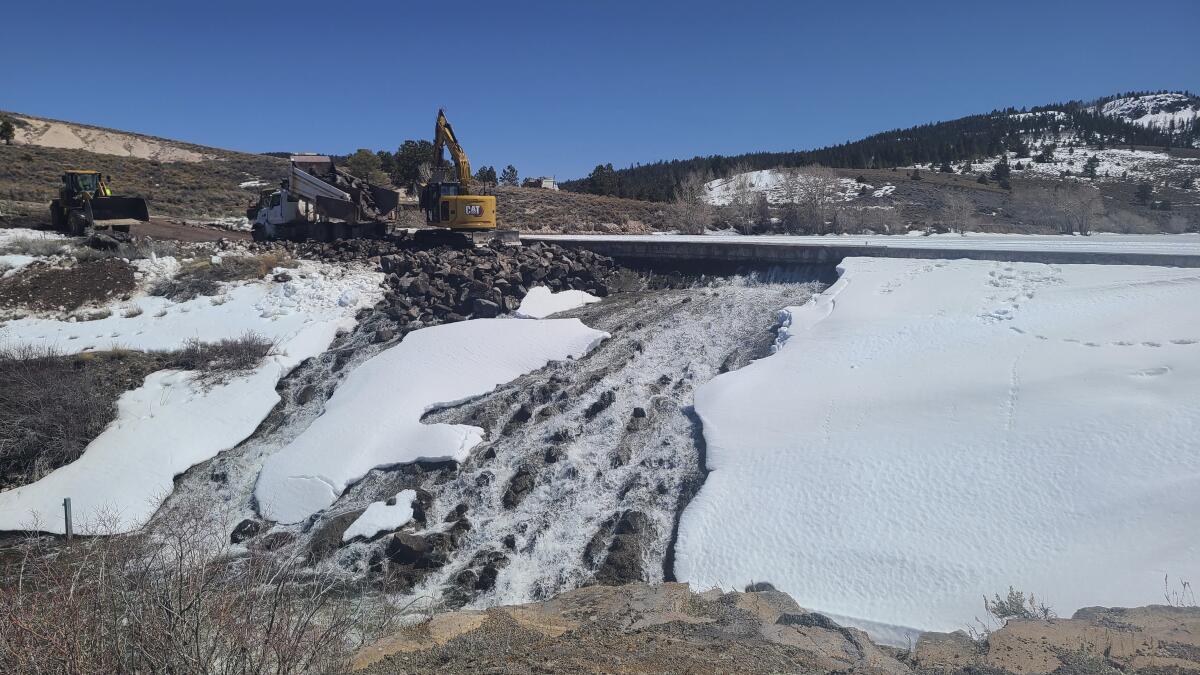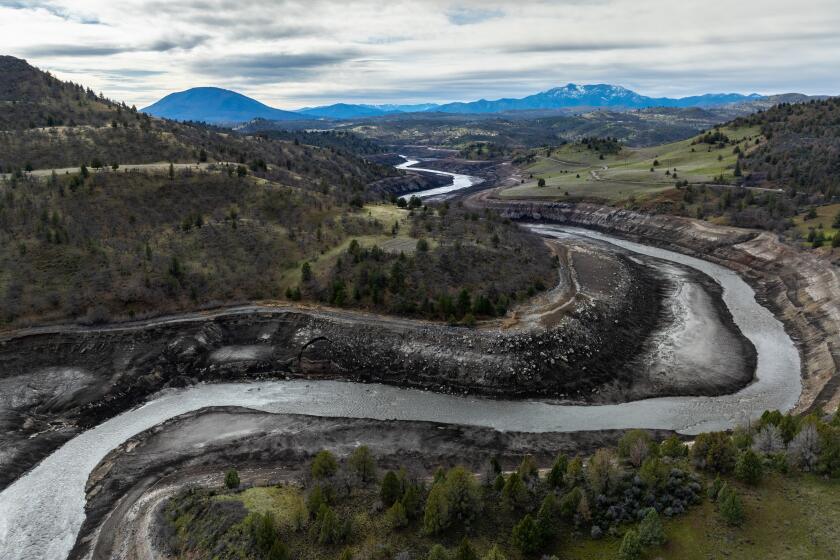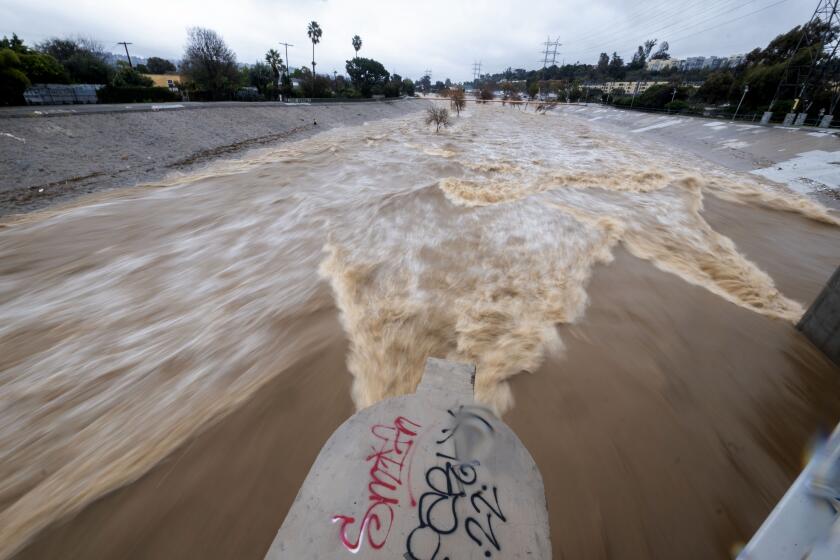Water pouring out of crack in rural Utah dam puts nearby town at risk

- Share via
SALT LAKE CITY — Workers hurriedly tried to shore up a rural Utah dam after a 60-foot crack sent water pouring into a creek and endangering the 1,800 residents of a downstream town.
State and local leaders don’t think the Panguitch Lake Dam is in imminent danger of breaking open but have told residents to be prepared to evacuate if conditions worsen. Emergency management officials passed out a list of evacuation procedures to worried residents at a Wednesday evening town meeting meant to mitigate panic.
“I can’t say that the emergency situation is entirely averted, but I’m very, very encouraged by the progress we’ve made today,” Everett Taylor, an assistant state engineer for dam safety with the Utah Division of Water Rights, told residents of the southern Utah town.
Lowering the reservoir to below the affected area will take several days, he said. About 2 feet of water remained above the crack as of Wednesday evening, and workers had covered nearly 45 feet of the crack with boulders.
Reservoirs have been drained as the nation’s largest dam removal effort advances on the Klamath River, and an effort to restore the watershed is taking root.
An ice sheet on the reservoir had pushed up against the dam, causing the top to crack and tilt downstream, with water gushing through the opening, Taylor explained. His staff was able to relieve some of the pressure against the dam by making large cuts across the ice sheet. The ice has now pulled away, and the top of the dam has tilted back, he said.
Local officials discovered the fissure in the upper portion of the dam during an inspection Monday night, and state officials announced it to the public on Tuesday. The state has labeled it a level 2 breach risk — a designation in the middle of the three-prong scale that means there is potential for dam failure.
If a breach occurs, state and local law enforcement will work with the Red Cross to evacuate Panguitch, which sits about 10 miles downstream from the dam. Another tiny town, Circleville, is farther downstream and faces a lower flood risk.
Reservoirs have been drained as the nation’s largest dam removal effort advances on the Klamath River, and an effort to restore the watershed is taking root.
Sgt. Jacob Cox of the Utah Highway Patrol, which has been tasked with helping prepare the town in case of an evacuation, told residents Wednesday that they should have ample time to gather their belongings and evacuate safely.
“This can be orderly,” he said. “If the notice is that the dam has broken or breached, we have time. The estimation is roughly two hours before those floodwaters are really inundating the town.”
Sirens will sound in the event of an evacuation, and officers will go door to door to make sure everyone has cleared the area, Garfield County Sheriff Eric Houston said. A nearby chapel and high school will serve as emergency shelters.
Water is being released at nearly 260 cubic feet per second to draw down the reservoir below the crack. Large rocks are being trucked in and placed on the downstream side of the dam to support the wall. No rain is forecast until Saturday.
Los Angeles County flood control network withstands punishing rains -- for now
The dam was built in the late 1800s, but the top portion that cracked was added to the dam in the 1930s and 1940s. There were no previous concerns regarding its structural integrity, and the crack came as a surprise, Taylor said.
Panguitch Mayor Kim Soper urged residents to steer clear of the creek receiving runoff from the reservoir, warning that the water level is much higher than usual and is a danger to children.
He teared up as he recalled standing in the same gymnasium in 2017 to prepare evacuation plans as a wildfire ravaged southern Utah.
“We got through that, and we’re going to get through this,” Soper assured his community. “It’s just a different emergency.”
Peterson and Schoenbaum write for the Associated Press. Peterson reported from Denver.
More to Read
Sign up for Essential California
The most important California stories and recommendations in your inbox every morning.
You may occasionally receive promotional content from the Los Angeles Times.












